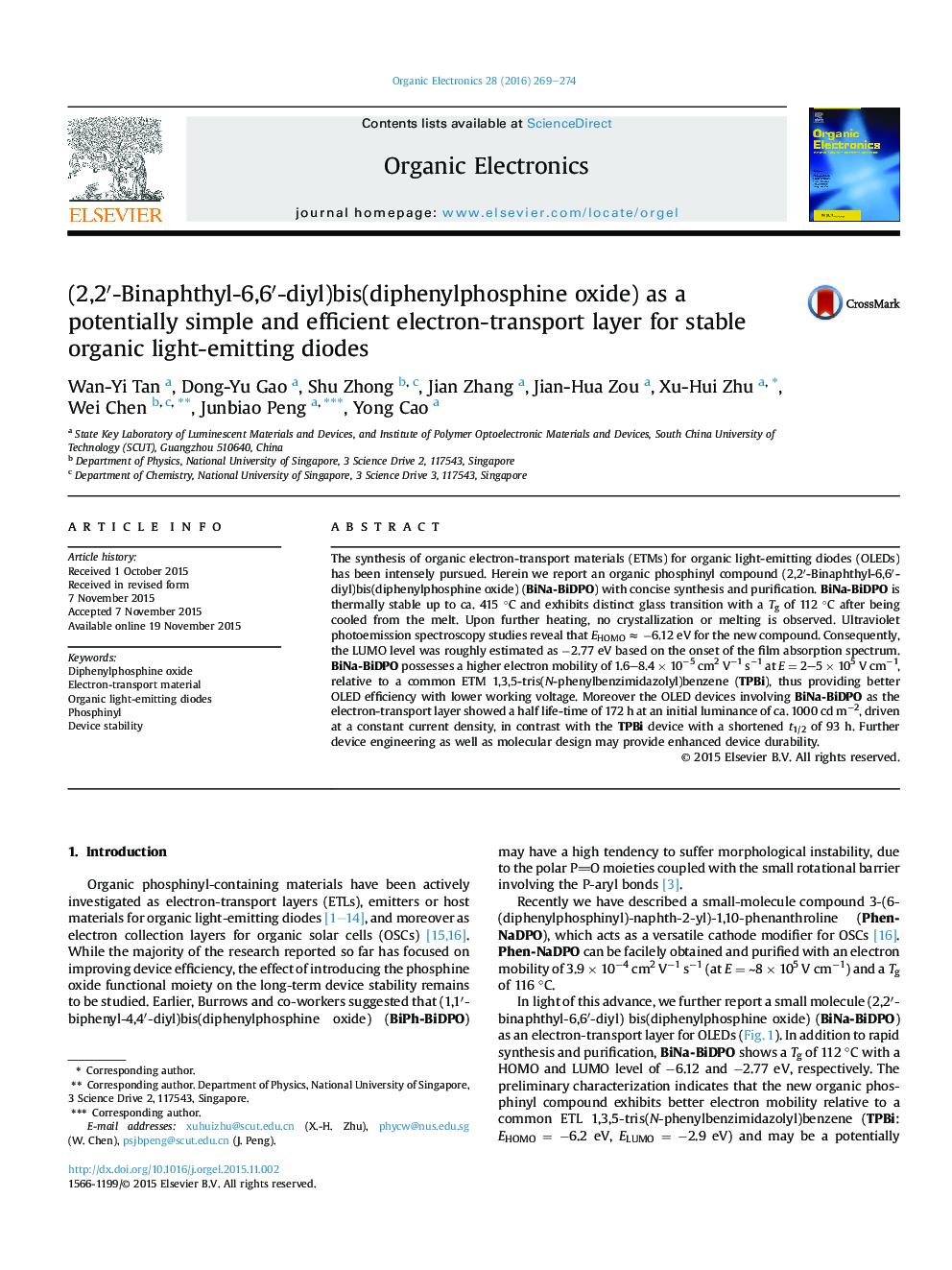| Article ID | Journal | Published Year | Pages | File Type |
|---|---|---|---|---|
| 1267144 | Organic Electronics | 2016 | 6 Pages |
•A bis(diphenylphosphine oxide) compound (BiNa-BiDPO) was facilely obtained and purified.•BiNa-BiDPO shows a distinct Tg of 112 °C. EHOMO ≈ −6.12 eV, EHOMO ≈ −2.77 eV.•BiNa-BiDPO possesses a higher μe, relative to TPBi, thus providing better OLED efficiency.•The OLEDs based on BiNa-BiDPO as the ETL exhibited enhanced stability, in contrast with TPBi.
The synthesis of organic electron-transport materials (ETMs) for organic light-emitting diodes (OLEDs) has been intensely pursued. Herein we report an organic phosphinyl compound (2,2′-Binaphthyl-6,6′-diyl)bis(diphenylphosphine oxide) (BiNa-BiDPO) with concise synthesis and purification. BiNa-BiDPO is thermally stable up to ca. 415 °C and exhibits distinct glass transition with a Tg of 112 °C after being cooled from the melt. Upon further heating, no crystallization or melting is observed. Ultraviolet photoemission spectroscopy studies reveal that EHOMO ≈ −6.12 eV for the new compound. Consequently, the LUMO level was roughly estimated as −2.77 eV based on the onset of the film absorption spectrum. BiNa-BiDPO possesses a higher electron mobility of 1.6–8.4 × 10−5 cm2 V−1 s−1 at E = 2–5 × 105 V cm−1, relative to a common ETM 1,3,5-tris(N-phenylbenzimidazolyl)benzene (TPBi), thus providing better OLED efficiency with lower working voltage. Moreover the OLED devices involving BiNa-BiDPO as the electron-transport layer showed a half life-time of 172 h at an initial luminance of ca. 1000 cd m−2, driven at a constant current density, in contrast with the TPBi device with a shortened t1/2 of 93 h. Further device engineering as well as molecular design may provide enhanced device durability.
Graphical abstractThe present result provides a first insight of a facilely available organic phosphinyl compound (2,2′-binaphthyl-6,6′-diyl)bis(diphenylphosphine oxide) as an electron-transport layer on the stability of sky blue fluorescent OLEDs and thus may stimulate further research on this class of materials for optoelectronics.Figure optionsDownload full-size imageDownload as PowerPoint slide
